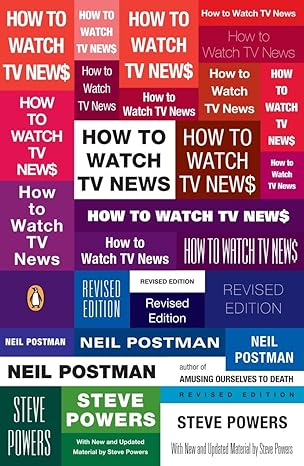How to Watch TV News (1992, revised edition)

In How to Watch TV News, Neil Postman and Steve Powers show how television turns news into a timed, visual performance shaped by ratings and advertisers. They explain how anchors, graphics, music, and “live” shots create a sense of urgency that can distort what matters. The book equips readers to separate information from entertainment and to notice the economic and stylistic pressures behind each broadcast.
The authors offer a practical media-literacy toolkit: ask who is paying, what is being shown versus said, how pictures frame judgment, and when speed outruns verification. Their advice helps viewers protect attention, resist hype, and build healthier habits for following public affairs across screens.
“Television news is a show about the world, not the world itself.”
Key Ideas from the Book
- News as Performance: Visuals, pacing, and persona shape belief—sometimes more than facts do.
- Economics of Attention: Ratings and advertisers nudge story choice, length, and tone.
- Image vs. Word: Pictures compress complexity; captions and scripts often follow the image, not the evidence.
- Speed vs. Verification: “Breaking” formats reward immediacy and speculation over context and certainty.
- Viewer Self-Defense: Identify the source, seek corroboration, compare outlets, and watch with the sound and assumptions in mind.
Why It Still Matters
The lessons extend beyond TV to social video and short-form feeds, where spectacle, sponsorship, and speed continue to shape public understanding. Postman and Powers give teachers, parents, and citizens a durable checklist for consuming news with judgment.